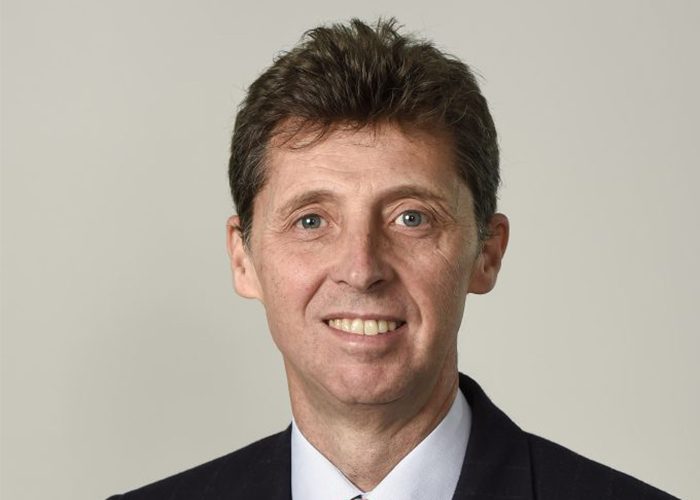IMDEA Networks

"5G networks will transform tourism by giving us almost unlimited real-time access to communications, data and computation services"
24 January 2018

The organizers of FITUR 2018, the annual international tourism fair celebrated at IFEMA (Madrid, Spain), interview Arturo Azcorra, Director of IMDEA Networks, Telematics professor at Universidad Carlos III of Madrid and Vice President of 5TONIC.
1- How do you rate the growing influence of technology in tourism?
We humans are increasingly interacting with each other and with our environment through information and communications technologies (ICTs), both on a personal and on a professional level. This marked sociocultural trend will also be reflected in the demand for tourist activity. The way we do tourism will be profoundly transformed in the next few years, particularly by the introduction of 5G technologies, which will involve a revolution in all sectors of activity, including tourism. In the years to come we will see 5G boosting tourism, with technological advances that will range from very simple applications such as listening to the tourist guide through our 5G phone using D2D, or virtual audio guides in the form of an app downloadable on the 5G phone, to highly sophisticated applications for augmented reality and virtual tourist settings on 5G.
2-What does 5G technology consist of and what is the goal of the IFEMA LAB 5G?
5G networks involve a complete redesign of current communications technology to offer us a fusion of the net with computation systems. Furthermore, 5G networks will provide personalised services, combining the necessary technical features to specifically meet the needs of each application and case of use. We will be able to provide a response for applications requiring features such as very high flow, extremely high communications density, very low delay, high reliability, very low cost, a vast quantity of terminals, access to metadata, high security or mobility at speeds of 500 Km/h, all of it with minimal energy consumption. 5G networks will provide an integrated service of personalised communications and computation for each application and case of use. In this context, the objective of the IFEMA LAB 5G created by 5TONIC and IFEMA is to anticipate the launch of 5G by developing the applications of the future now so that they can be available simultaneously with the deployment of 5G networks and services.
3- Which real applications will this technology have in the tourism industry as well as in that of major events? Which benefits will it provide?
 5G networks will completely transform the way in which we do tourism because they will give us access to almost unlimited communications, data and computation services in real time. Business tourists will be able to go on their trips and carry out their activities more efficiently and adapted to their personal needs as well as to any change in them. They will enjoy integrated support, with access to transport, accommodation, customers and entertainment in virtual form, through their 5G terminal, with improved man-machine interfaces, incorporating assistance, translation, localisation and replanning services. For leisure tourists, 5G will provide them with a new travel experience, strengthening knowledge and immersion at each destination in cultural, gastronomic, shopping and historic-artistic terms. 5G will also provide a new way of interacting with other members of the group (should there be any), with other tourists with our same profile and preferences and also with local people. For tourism companies, the power of 5G will give them much better knowledge of their customers, their characteristics, their tastes, preferences, interests, customs, segmented by groups of interest and profiled in great detail (with total respect for privacy and anonymity). These are only a few of the aspects of the major impact 5G will have on the tourism industry. Any country left behind in this race will suffer a severe setback in its appeal as a destination.
5G networks will completely transform the way in which we do tourism because they will give us access to almost unlimited communications, data and computation services in real time. Business tourists will be able to go on their trips and carry out their activities more efficiently and adapted to their personal needs as well as to any change in them. They will enjoy integrated support, with access to transport, accommodation, customers and entertainment in virtual form, through their 5G terminal, with improved man-machine interfaces, incorporating assistance, translation, localisation and replanning services. For leisure tourists, 5G will provide them with a new travel experience, strengthening knowledge and immersion at each destination in cultural, gastronomic, shopping and historic-artistic terms. 5G will also provide a new way of interacting with other members of the group (should there be any), with other tourists with our same profile and preferences and also with local people. For tourism companies, the power of 5G will give them much better knowledge of their customers, their characteristics, their tastes, preferences, interests, customs, segmented by groups of interest and profiled in great detail (with total respect for privacy and anonymity). These are only a few of the aspects of the major impact 5G will have on the tourism industry. Any country left behind in this race will suffer a severe setback in its appeal as a destination.
4- Which areas are you working on and with which technology base (augmented reality, mixed reality, etc.)?
At the IFEMA LAB 5G created between 5TONIC and IFEMA, as well as in other advanced centres, we are working on multiple spheres and new directions. On the one hand we are working on applying 5G technologies with a view to reinforcing and improving current tourist experiences and, on the other, on developing new tourist experiences based on the capabilities of the 5G networks. We are working on technologies applied to data analysis, processing of natural language, 360º video, haptics and multisensory interfaces, augmented reality, localisation, virtual environments and many other working areas with major potential for application in the tourism industry.
5- Which of the Lab’s fields and conclusions have visitors at FITUR 2018 been able to discover?
We have been working on four advanced 5G applications and of which we showed some prototypes at FITUR 2018. These applications are the “Augmented Trade Fair”, the “Time Travel”, which gives access to all the trade fair’s sessions in real and delayed time, the “translator”, which is a real-time multilingual interpreter accessible to all trade fair attendees, and the “teleport”, which is the immersive teleconference service in three dimensions.


Recent Comments